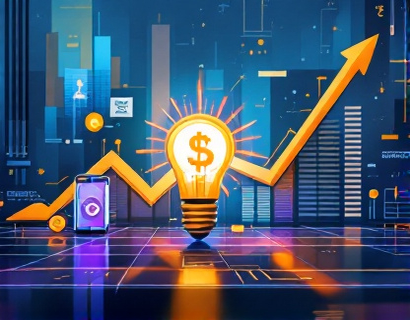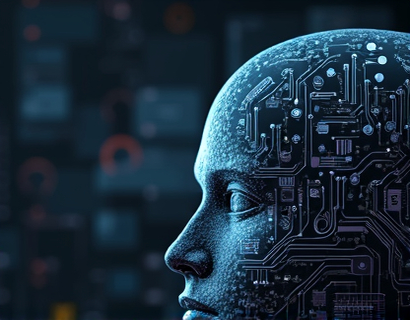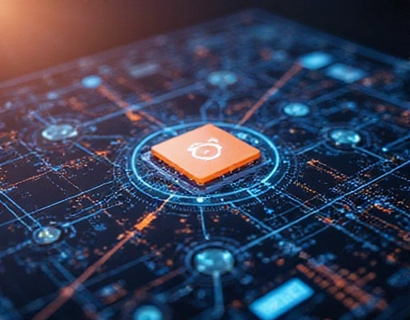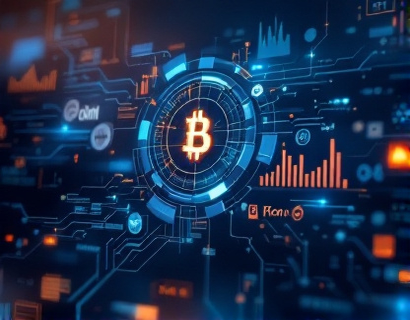Revolutionizing Digital Asset Management: The Rise of Decentralized Cross-Blockchain Conversion dApps
The blockchain ecosystem has witnessed a significant transformation with the advent of decentralized applications (dApps) that facilitate cross-blockchain conversions of digital assets. These innovative solutions are reshaping the way blockchain professionals and digital asset managers handle asset management, offering a seamless, efficient, and compatible experience across diverse blockchains. This article delves into the intricacies of these decentralized applications, highlighting their benefits and the impact they are having on the industry.
Understanding Cross-Blockchain Asset Conversion
Cross-blockchain asset conversion refers to the process of transferring digital assets from one blockchain to another. This process is crucial in a decentralized economy where assets need to be interoperable across different platforms. Traditional methods of cross-blockchain transfers often involve complex workflows, high transaction fees, and potential security risks. Decentralized dApps address these challenges by providing a streamlined, user-friendly, and secure solution for asset conversion.
Key Features of Decentralized Cross-Blockchain dApps
Decentralized dApps designed for cross-blockchain asset conversion come equipped with several key features that make them indispensable tools for blockchain professionals and digital asset managers:
- Seamless Asset Transfer: These dApps enable users to transfer assets between blockchains without the need for intermediaries, reducing friction and enhancing user experience.
- Interoperability:
- Ensuring compatibility across various blockchains, these dApps allow for smooth asset movement, breaking down silos and fostering a more connected blockchain ecosystem.
- Security:
- By leveraging decentralized protocols and smart contracts, these applications minimize the risk of fraud and unauthorized access, providing a secure environment for asset management.
- Transparency:
- All transactions and asset movements are recorded on the blockchain, offering full transparency and traceability.
- User Control:
- Users maintain full control over their assets throughout the conversion process, without relying on central authorities.
How Decentralized dApps Work
The operation of decentralized cross-blockchain dApps involves several technical components and processes:
First, the dApp connects to the user's wallet, allowing them to select the assets they wish to convert. The selected assets are then placed into a smart contract, which acts as a self-executing agreement with the terms of the conversion predefined. The smart contract verifies the assets and initiates the conversion process by interacting with the relevant blockchains' APIs or native protocols.
Once the conversion is initiated, the smart contract manages the transaction, ensuring that the assets are accurately transferred from the source blockchain to the target blockchain. This process is automated and requires no human intervention, reducing the potential for errors and delays. Upon successful conversion, the assets are transferred to the user's new wallet, ready for use on the target blockchain.
Benefits for Blockchain Professionals and Digital Asset Managers
The introduction of decentralized cross-blockchain dApps offers numerous advantages for professionals in the blockchain space:
Enhanced Efficiency
By automating the conversion process, these dApps significantly reduce the time and effort required to transfer assets between blockchains. This efficiency gain translates to faster transaction times and improved productivity for digital asset managers.
Cost Reduction
Traditional cross-blockchain transfers often involve high fees due to intermediaries and complex processes. Decentralized dApps eliminate these intermediaries, lowering transaction costs and making asset management more cost-effective.
Increased Security
The use of smart contracts and decentralized protocols enhances the security of asset transfers. The immutable nature of blockchain technology ensures that once a transaction is recorded, it cannot be altered, providing a high level of security against fraud and cyber threats.
Greater Flexibility
Decentralized dApps support a wide range of blockchains and asset types, offering users the flexibility to manage and convert assets across different ecosystems. This versatility is particularly valuable in a diverse and rapidly evolving blockchain landscape.
Improved User Experience
The user-friendly interface and streamlined process of these dApps make asset conversion accessible to both technical and non-technical users. This democratization of asset management empowers a broader range of individuals to participate in the blockchain economy.
Case Studies and Real-World Applications
Several notable projects and platforms have successfully implemented decentralized cross-blockchain conversion dApps, demonstrating their practical applications and benefits:
One prominent example is a decentralized exchange (DEX) that allows users to swap tokens between different blockchain networks seamlessly. By integrating a cross-blockchain conversion feature, the DEX enhances user experience and expands its token offerings, attracting more traders and increasing liquidity.
Another instance is a decentralized finance (DeFi) protocol that enables users to lend and borrow assets across multiple blockchains. The protocol uses a cross-blockchain conversion dApp to ensure that borrowed assets can be used on different platforms, providing greater flexibility and access to diverse financial products.
Challenges and Future Developments
Despite the numerous advantages, the adoption of decentralized cross-blockchain dApps faces several challenges:
Technical Complexity
The development and maintenance of cross-blockchain solutions require advanced technical expertise. Ensuring compatibility and interoperability across diverse blockchains remains a complex task that demands continuous innovation and collaboration.
Regulatory Uncertainty
The regulatory landscape for blockchain and digital assets is still evolving. Decentralized dApps must navigate varying legal requirements and ensure compliance, which can be a hurdle for widespread adoption.
Scalability
As the number of users and transactions increases, ensuring the scalability of these dApps is crucial. Developers must focus on optimizing performance and handling high volumes of data and transactions efficiently.
Looking ahead, the future of decentralized cross-blockchain dApps is promising. Advancements in blockchain technology, such as layer 2 solutions and cross-chain protocols, will further enhance the capabilities of these applications. Increased adoption and standardization efforts will also contribute to a more interconnected and efficient blockchain ecosystem.
Conclusion
The emergence of decentralized cross-blockchain conversion dApps represents a significant leap forward in digital asset management. By providing a seamless, secure, and efficient way to transfer assets between blockchains, these applications empower blockchain professionals and digital asset managers to navigate the complexities of the decentralized economy with greater ease. As the technology matures and more solutions emerge, the blockchain landscape will become increasingly interconnected, fostering innovation and growth across the industry.











































